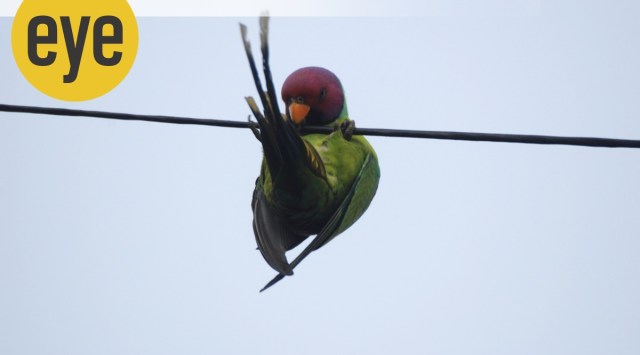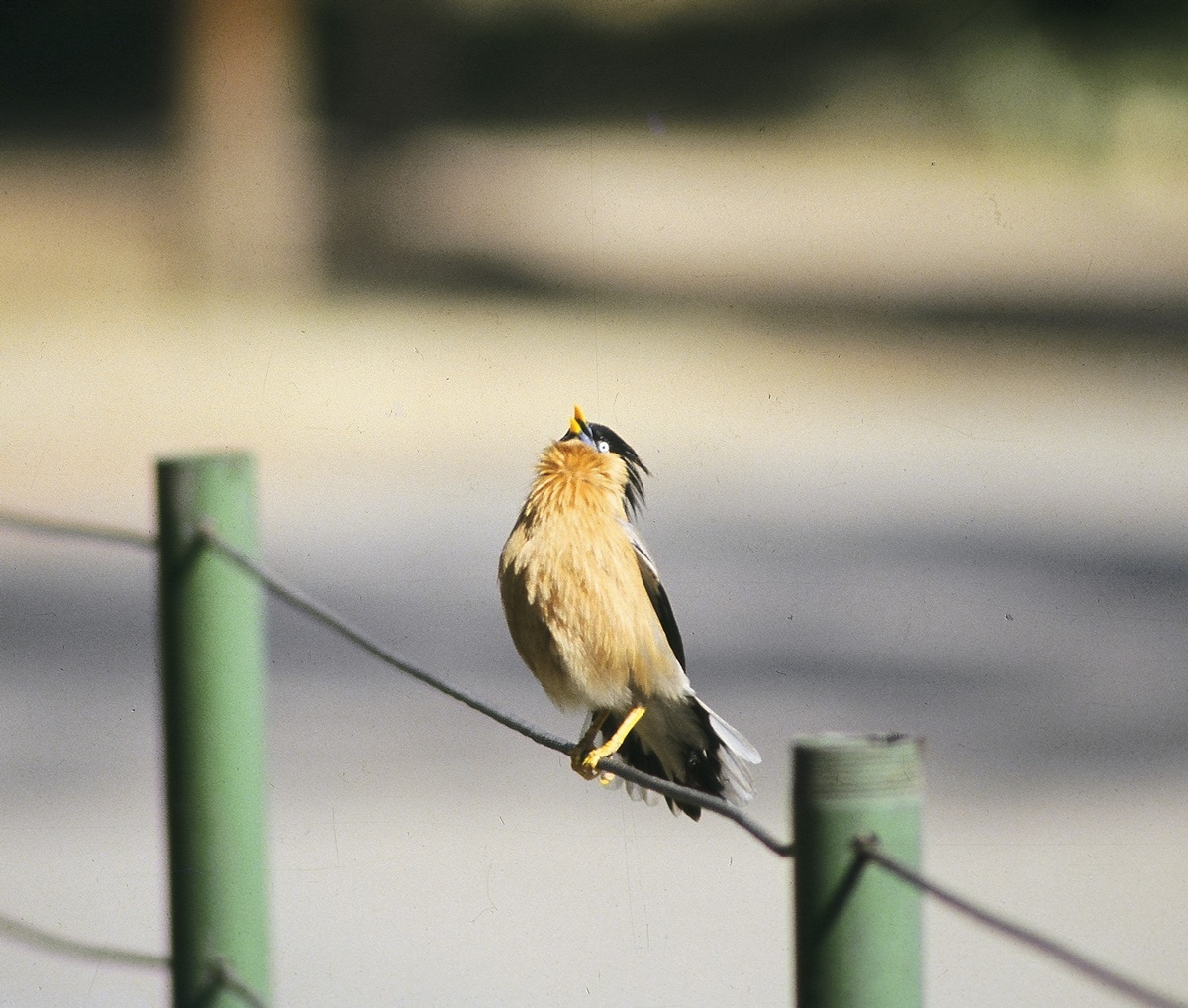Where have the plum-headed parakeets and ashy prinias vanished?
Has the competition for property and food got so fierce the larger birds have simply pushed out the smaller ones?
 Plum-headed parakeet (Credit: Ranjit Lal)
Plum-headed parakeet (Credit: Ranjit Lal)We’ve started off what scientists call the ‘sixth great extinction event’ condemning thousands of species of plants, insects, amphibians, birds, mammals, fish and reptiles to a forever farewell. For many of them we know only too well the reasons why they are in such dire straits – and, in so many cases, are doing damn all about it. The Great Indian Bustard, a truly magnificent bird (and one which Salim Ali cannily proposed be named the National Bird) has been robbed of its habitat and is being made to blunder into live wires strung across its airspace or get minced by giant windmill propellers. They are down to just around 100 birds they say, and we, of course, are only now scrambling to retrieve the situation.
The extinction of distant species doesn’t really affect most of us, but it’s a different matter when you see it happen in your own little neck of the woods, and can’t for the life of you understand the reason why. This particularly so, when species which are close relatives of the vanished one and with similar lifestyles, seem to be thriving. In my neck of the woods, for example, large grey babblers have more or less vanished, while their cousins, the jungle babblers are doing just fine. Large greys used to hop around under the trees, muttering ‘kay-kay-kay’ in their harsh undertones, their pale eyes glaring. A little larger than jungle babblers they had more or less the same diet as far as I could tell and a similar lifestyle – but now they have gone. That other babbler: the common babbler that used to drive my dog nuts by its trilling, alarm-clock-like whistle has completely vanished.
It was reported recently that ashy prinias (nee ashy wren-warblers) were one species that were actually doing well in the Delhi region. Sure, I used to see them skulking along the bottom of the hedges quite frequently, uttering their plaintive ‘tee-tee-tee’ calls, that increased in urgency and volume if say they had spotted cat. Once they even nested in one of the flower beds, building an untidy looking home, but softly lined with spider silk in which three or four peanut-like eggs were laid. Alas, a crow discovered their home, devoured their babies and then tore the nest loose of its moorings, destroying it completely (and reminding you of what bulldozers do these days). Nothing daunted the parents began constructing a second nest in the next-door garden.
Now I’ve always associated ashy prinias with tailorbirds – I’ve seen the two together on many an occasion and they seem to share pretty much the same diet of insects and spiders. Today, the ashy prinias have all but vanished, whereas the tailorbirds are doing just fine. So why has one gone AWOL while the other seems to be doing okay?
 Brahminy myna (Credit: Ranjit Lal)
Brahminy myna (Credit: Ranjit Lal)
Of the three parakeets found in Delhi, the plum-headed (nee blossom-headed) was easily the most attractive and charismatic. It was smaller than the ubiquitous rose-ringed (or ring-necked) parakeet and the larger more raucous Alexandrine parakeet, which wears maroon epaulettes on its wings. The plum-headed parakeets would streak across the skies whistling ‘tooi-tooi?’ as they went past, like schoolboys gleefully making off after making mischief. The gents had deep plum-coloured heads and papaya coloured bills, the ladies had grey heads and papaya coloured bills. Now all three species of parakeet have pretty similar habits: They nest in holes in tree trunks or boughs, they will raid the guava trees and the bottlebrush when it’s blooming in pin-drop silence. All three seem to love clowning on cable wires – somersaulting and hanging upside down and checking out the scene from this angle.
Yet now, the plum-headeds have all but vanished – and I can’t remember the last time I saw them streaking across the heavens like green missiles. The other two are doing fine. Had the competition for property (and food) got so fierce that the two larger species have simply pushed out the smaller one? Had they suddenly been declared to be illegal immigrants and been sent off to Rwanda? (The UK is the last country in the world that should be talking about immigration, considering their history!) So, what’s going on?
Collared doves, again at one time a frightfully common species, seem to be in decline, while their little cousins the laughing doves (don’t be fooled – they sound more like they are softly weeping rather than laughing!), still hop around outside the dining room and belligerently chase each other. Blue rock doves, through their exploding numbers and the patronage they get from locals have been held partially responsible for the disappearance of sparrows, so can they also carry the can for collared doves?
Among the myna (or starling) clan, the brahminy-starling is my all-time favourite and I would often see pairs hopping around on the big lawns. With their rolling eyes and punkish crests, they reminded me of raffish troubadours singing their hearts out for unattainable beloveds. But not anymore; they’ve gone. Also more or less AWOL are the chatty, somewhat earnest looking pied mynas. The common, Indian mynas, still strut around like landlords, and have always made me think they are like Delhizens (though unlike most Delhizens, they hold enchanting conversations with each other, and the gents are extremely gallant; though yes, they also like nothing better than a no-holds barred scrimmage in the dust first thing in the morning!) So, in some way, have Indian mynas been responsible for the thinning out of their cousins?
To find out, we need to get into nitty-gritty, down and dirty, field research. All the above examples are just anecdotal. And anecdotes sadly usually just don’t cut it with science.




- 01
- 02
- 03
- 04
- 05



























